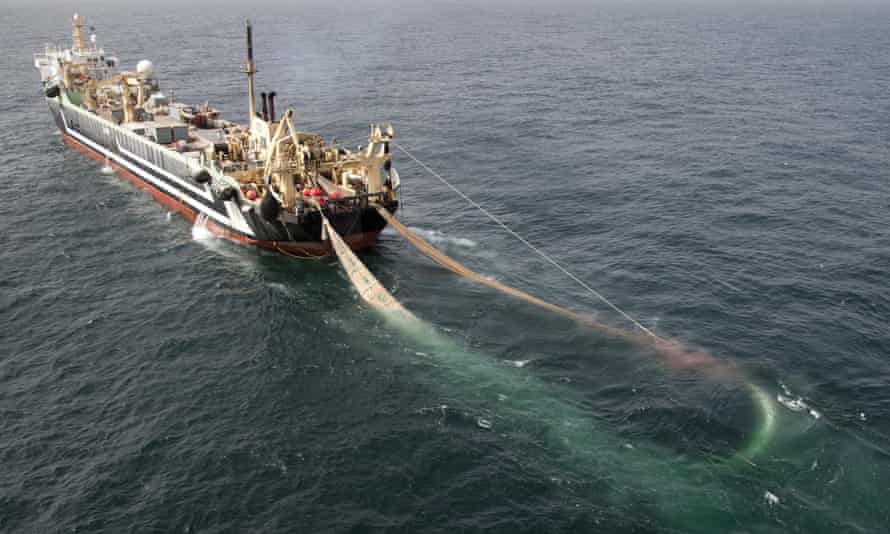SOURCE: The Guardian
DATE: June 11, 2020
SNIP: Supertrawlers spent almost 3,000 hours fishing in UK marine protected areas in 2019, making “a mockery of the word ‘protected’,” according to campaigners.
Supertrawlers are those over 100 metres in length and can catch hundreds of tonnes of fish every day, using nets up to a mile long. A Greenpeace investigation revealed that the 25 supertrawlers included the four biggest in the world and fished in 39 different marine protected areas (MPAs).
The Southern North Sea MPA was one of those fished and was created to safeguard porpoises, which are especially threatened by supertrawlers. More than 1,000 porpoises died in fishing nets around the UK in 2019. The most heavily fished MPA was the Wyville Thomson Ridge, off Shetland, which was intended to protect reefs. All the supertrawler fishing was legal.
Forty per cent of England’s seas are designated as MPAs, but these only ban some of the most damaging activities in some locations. On Monday, an independent review commissioned by the government urged the establishment of highly protected marine areas (HPMAs), where all harmful activities including fishing, dredging and construction are banned. The government’s own assessment in 2019 showed the marine environment is not in a healthy state.
“Our government allowing destructive supertrawlers to fish for thousands of hours every year in MPAs makes a mockery of the word ‘protected’,” said Chris Thorne of Greenpeace UK. “For our government to be taken seriously as a leader in marine protection, it must ban this practice.”
Rainer Froese, of the Helmholtz centre for ocean research in Kiel, Germany, said: “Overfishing means taking more fish out the water than can grow back – that’s pretty stupid. The stocks shrink, and small stocks can only support small catches. It doesn’t help the fishermen, it doesn’t help the fish, it doesn’t help anyone.”
Overfishing also harmed the climate, he added: “If the ecosystem does not function properly, it cannot breathe properly and cannot absorb carbon dioxide properly.”

